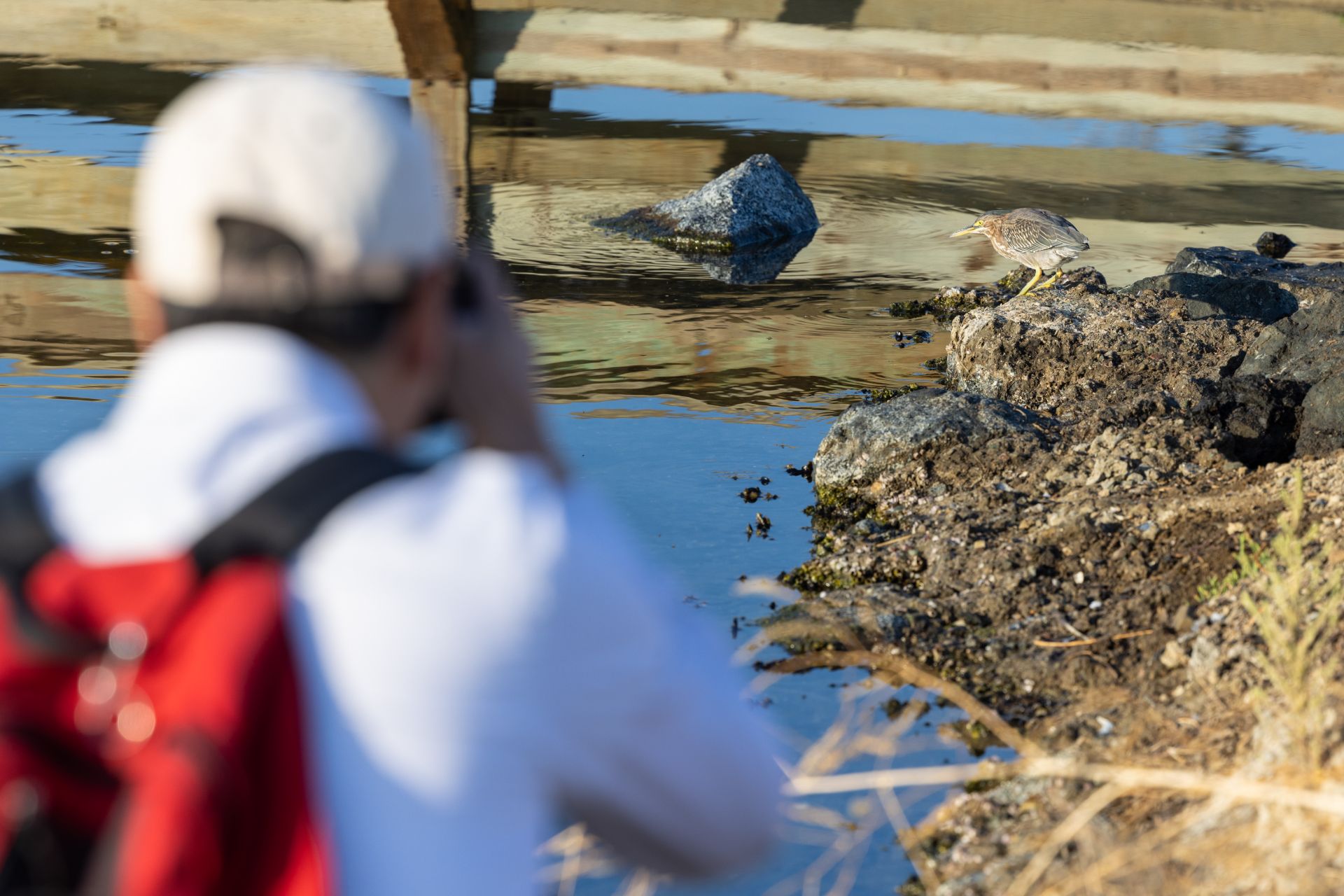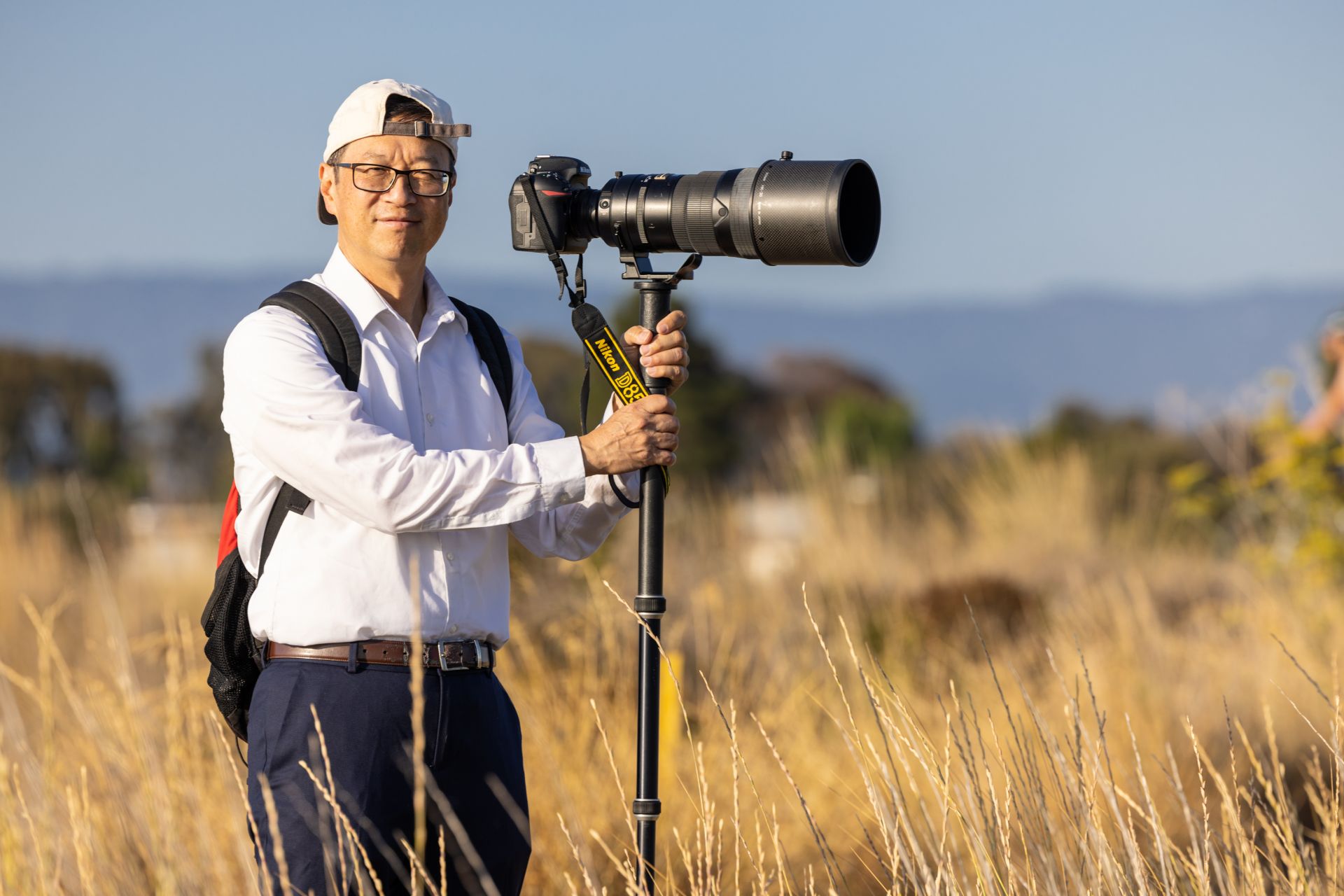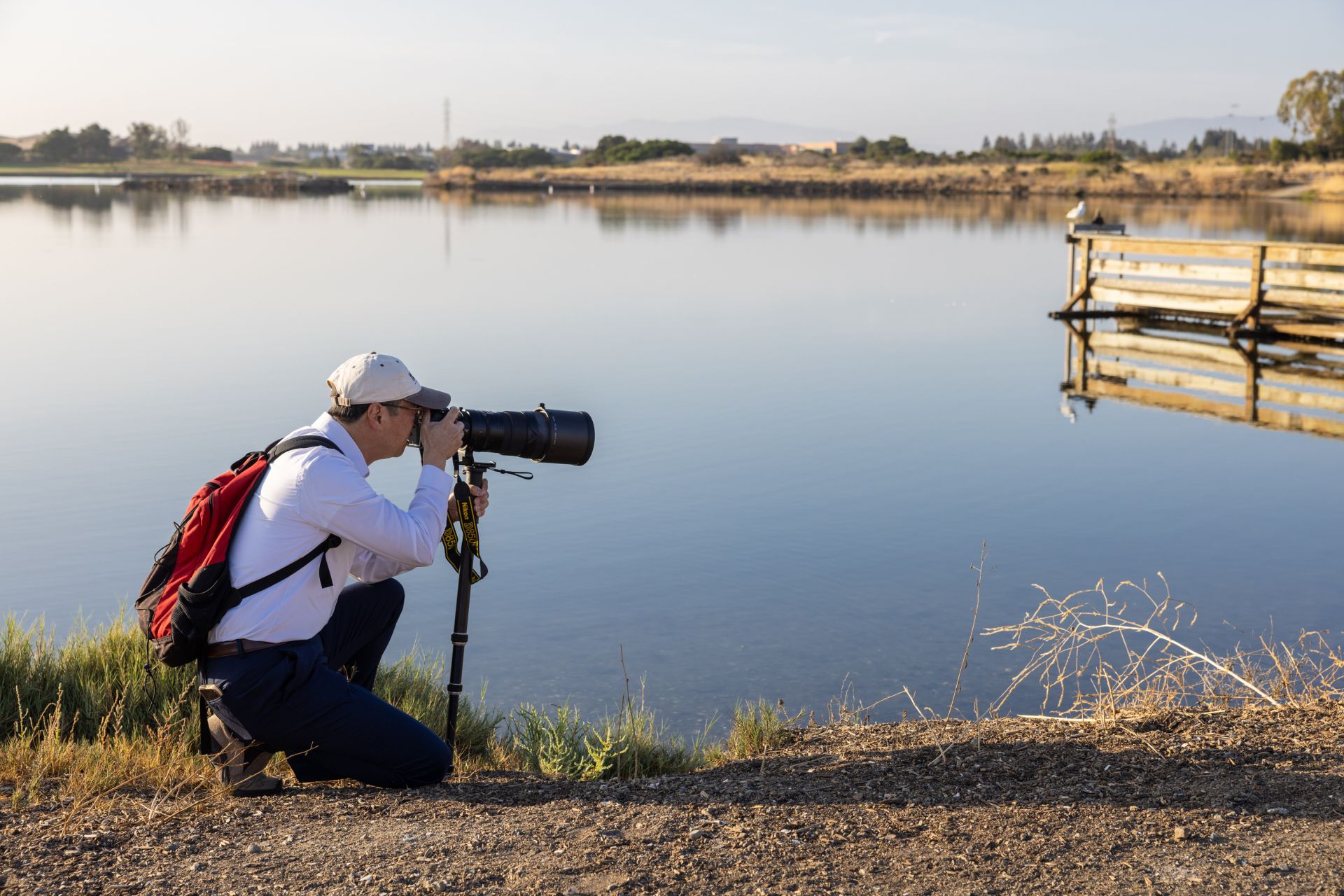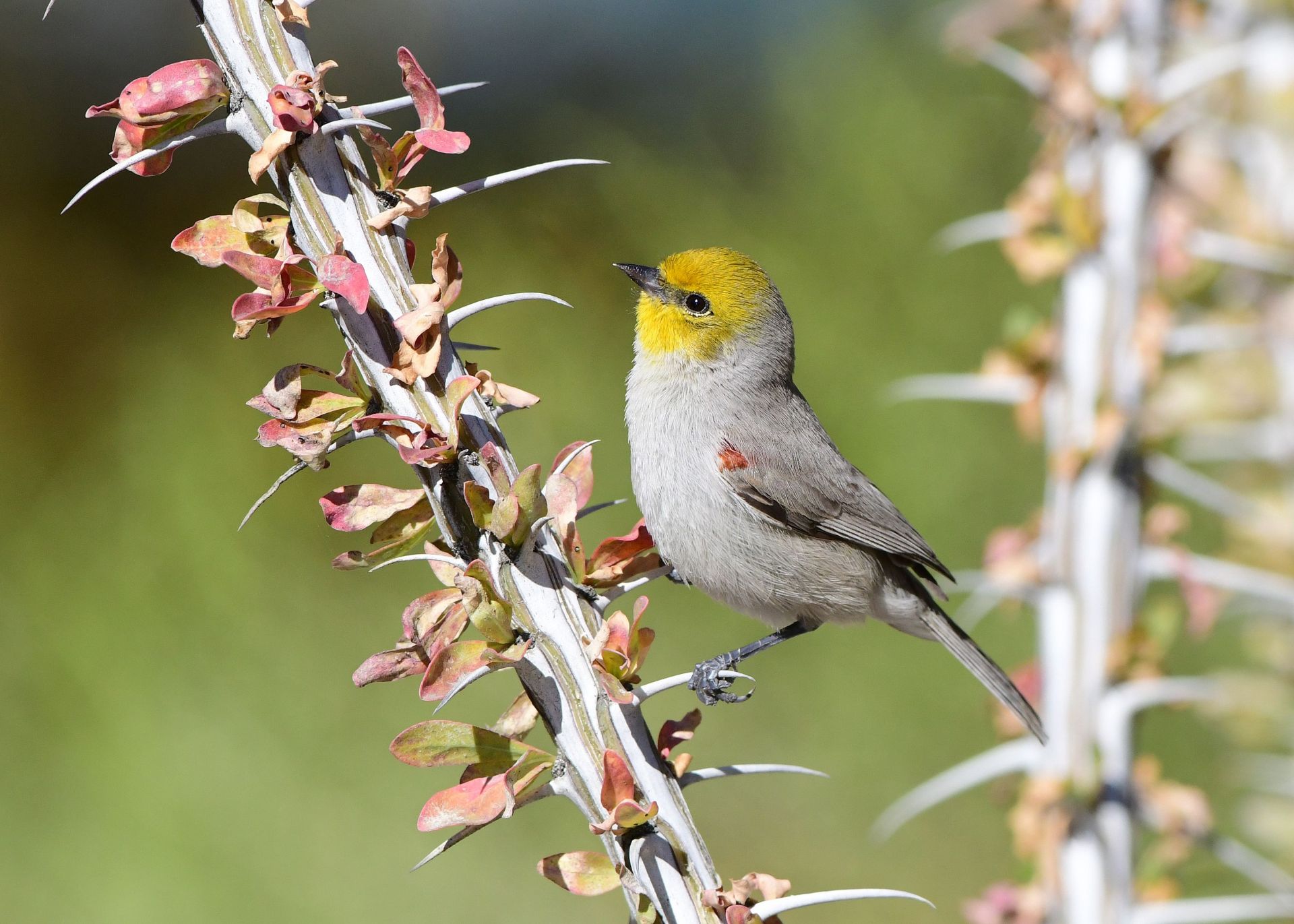Wen-Kai Weng: A True Birder at Heart

Wen-Kai Weng: A True Birder at Heart

Wen-Kai Weng, MD, PhD with his camera in Palo Alto Baylands Nature Preserve.
Wen-Kai Weng, MD, PhD, associate professor of blood and marrow transplantation (BMT), has a hobby. No, more than a hobby, really: a passion. In addition to being a doctor and cell therapist and a newly awarded 2021 Master Teacher in the Department of Medicine, Weng is a dedicated nature photographer (specifically focusing on birds) who develops a yearly calendar of his nature photography and gives all the proceeds to BMT patients. Below, he answers our most pressing bird-photography questions.
What is your role at Stanford, and how long have you been here?
I am a transplanter and cell therapist, who specializes in treating people with hematologic malignancy. My clinical and research focus is on lymphoma. I started my medical oncology fellowship at Stanford in 1999 and joined the faculty of the division of blood and marrow transplantation in 2007.
When did you first become interested in photography? Did your love of birds or your love of photography come first?
I started playing with my camera when I was in high school. However, I got really interested in birding in medical school. Once I became a serious birder, bird photography was a natural next step. I mostly photograph birds, since they don’t complain about the results.
What kind of camera do you use? What’s the process you go through to develop photos?
I’ve always used a Nikon system. My current camera is a Nikon D850 with 300 mm telephoto lens. Since all the photos are digital now, I use Photoshop to help me edit. But I don’t edit heavily — I just try to reflect what I see in the field.
What’s your favorite thing about photography?
Birding needs patience, and so does photography. Bird photography forces me to practice delayed gratification. I also enjoy the challenges involved.
How did you get the idea to make a calendar of your bird photography?
The idea first came to me when I donated two old prints of my photos to an auction to raise funds for transplant patients in need and their families. They sold, and I thought that making a calendar would be a natural way to make use of the photos I took and link them to a meaningful purpose. I’ve been making and selling the bird calendars since 2017, and I use the proceeds to set up a fund to help those same patients and families. I have been humbled by people’s generosity in helping this project for all these years. It has raised more than $50,000 thus far.
How do you think your hobby has influenced your work at Stanford, if at all?
To me, it’s a pleasure to be able to link my two passions together, medicine and photography. Doing the calendar also obviously motivated me to go out to the field and get more good photography.
What’s your favorite bird you’ve ever seen and photographed?
It is hard to pick a favorite bird. However, I can pick a favorite experience. It was at Hawk Ridge at Duluth, Minnesota, in the fall when the raptors were migrating south for the winter. Seeing more than 40,000 birds (mostly broad-winged hawks) fly through in one day was an experience I will never forget.
Any favorite spots for birding?
I do a mix of planned and casual trips for birding and photography. Given my busy work schedule, the planned trips happen less and less. I like seeing and photographing any birds, even the common ones. And it’s nice because in the United States, there are three major flyways for bird migration, including the Pacific Flyway crossing California. And as part of the flyway, the Sacramento River Valley is a great spot for wintering ducks and geese.
Finally, what advice do you have for amateur photographers who want to do what you do?
Pick up a camera and start taking pictures. You will find your vision in time.




